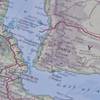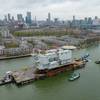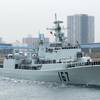US Lawmakers Warning of Dirty Bomb Threat to US Ports
GateKeeper USA Inc. (OTC Symbol: GTKP) announced that in a recent Bloomberg article, it was reported by Jeff Bliss that the US Backs Off All Cargo Scanning Goals.
As reported by CBP (Customs & Boarder Protection), officials' port X-ray and Gamma-ray machines were only able to facilitate scanning 4.1% of the millions of containers that arrive in US ports each year. That percentage is consistent over the last several years. Even though DHS has publically admitted that with the utilization of existing technologies 100% screening of incoming containers would be nearly impossible, lawmakers continue to favor the mandate and stated that they are concerned about terrorists detonating a dirty bomb at a port, killing workers and rendering the facility and surrounding areas uninhabitable for years. Stephen Flynn, founding co-director of the George Kostas Research Institute for Homeland Security at Northeastern University in Boston, stated that, "So much commerce flows through ports that any interruption stemming from an attack would reverberate throughout the worldwide supply system." The US Congressional Budget Office estimated that a yearlong shuttering of the ports of Long Beach and Los Angeles would cost $70 Billion, or as much as .55% of gross domestic product.
As reported this past summer, the Department of Homeland Security has failed to meet the legal deadline for scanning incoming maritime cargo containers for radioactive materials. In a July 15, 2012 article, Douglas Frantz stated that DHS says monitors scan containers for radiation after they arrive at U.S. ports. But experts say the monitors at U.S. ports are not sophisticated enough to detect nuclear devices or highly enriched uranium, which emit low levels of radiation.
Containers often sit for days awaiting radiation checks. The Government Accountability Office has warned that a nuclear device could be detonated while at a port, causing billions of dollars in damage in addition to the loss of life. Estimates of damage caused by a nuclear detonation at a major port range from tens of billions of dollars to $1 trillion."
According to Berg Insights, there were over 130,000 different cargo and port security devices sold in the first part of 2012 alone, all hoping to capture a portion of a huge multi-billion dollar international market. Steve Vito, a partner in UpsonVito LLC, said in a statement on Jan. 3rd, "Sixty-three major US ports have technology-driven infrastructure improvement projects worth over $46 billion slated for the next five years." With the exception of CAMS, the entirety of the devices devoted to CBRNE (chemical, biological, radiological, nuclear & explosive) detection, require the use of multiple devices and applications to either detect or alert only after a container has reached its destination port.
According to Gatekeeper, failure to detect CBRNE material is a breach that cannot be tolerated, and the CAMS device from Gatekeeper USA answers that challenge since it is the ONLY device that is capable of DETECTION and NOTIFICATION of the presence of contraband IMMEDIATELY upon activation. To date, Gatekeeper USA's CAMS device is the only known device that has the ability to scan the interior of a shipping container 24/7 and will signal alerts in real time from the moment it is loaded and throughout its overseas journey until it is shipped inland and unloaded at its final destination. Gatekeeper's CAMS devices can meet the mandate from DHS making 100% screening possible, and prevent an attack on US soil.











